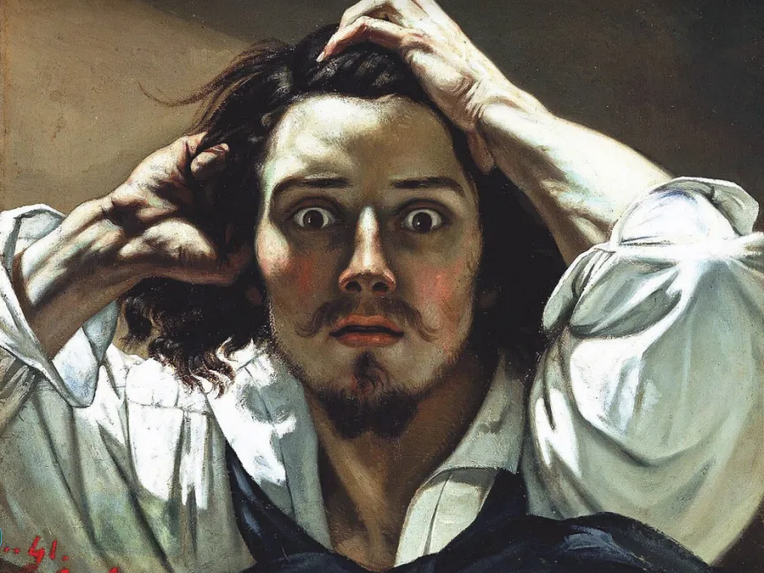Qatar revealed as Owner of famed Courbet Self-Portrait

Qatar has revealed that it owns Gustave Courbet’s famed self-portrait The Desperate Man and will loan the painting to Paris’s Musée d’Orsay for five years.
The Musée d'Orsay and Qatar Museums announced an agreement to loan Gustave Courbet's masterpiece Autoportrait, also known as Le Désespéré.
By virtue of an exceptional loan agreement between the Musée d'Orsay and Qatar Museums, which owns Gustave Courbet's Autoportrait (Self-Portrait), also known as Le Désespéré (The Desperate Man, circa 1844–1845), the painting is now on display at the Musée d'Orsay.
On 20 April this year, during the visit to Doha of HE French Minister of Culture Rachida Dati, a framework agreement was signed between Qatar Museums and the Public Institution of the Musée d'Orsay and the Musée de l'Orangerie - Valéry Giscard d'Estaing, with the loan of Courbet's Autoportrait being its first implementation.
The picture is to be on display at the Musée d'Orsay until the opening of the Art Mill Museum in Doha, an institution that will be devoted to Qatar Museums' modern and contemporary art collection.
After an initial period of presentation at the Art Mill Museum, the painting will be exhibited alternately between Paris and Doha.
HE Chairperson of Qatar Museums Sheikha Al Mayassa bint Hamad Al-Thani said, “Sylvain Amic was a visionary who understood the need for works of art to travel and be accessible to different parts of the world.
His work with us under a new cultural agreement between Qatar and France made possible the long-term loan of Gustave Courbet's self-portrait Le Désespéré, a painting we acquired for our future Art Mill Museum of modern and contemporary art.
Le Désespéré reflects Courbet's emotional struggle to break away from artistic conventions and be understood.
In a similar way, Sylvain moved away from the status quo, enhancing museum experiences beyond traditional norms.
We honor his memory by unveiling Le Désespéré at the Musée d'Orsay on this occasion, with pride that the painting will travel regularly between Doha and Paris in the future, and with confidence that Sylvain's legacy will inspire the next generation of museum directors and curators to think about the power of culture beyond their own walls.”
A great specialist in the oeuvre of Gustave Courbet, Sylvain Amic – in association with the Ministry of Culture and Qatar Museums representatives – was committed to working on this agreement in order to enable all visitors to the Musée d'Orsay to admire this masterpiece, which had not been seen in France since the major retrospective exhibition Gustave Courbet held in 2007-2008 in Paris (Galeries Nationales du Grand Palais), New York (Metropolitan Museum of Art) and Montpellier (Musée Fabre).
Between 1842 and 1855, Gustave Courbet (1819-1877) produced some twenty painted and drawn self-portraits. The artist chose a variety of mises en scène, several of them inherited from the romantic tradition, revealing self-assertion crossed with a search for identity.
This self-portrait is certainly the most remarkable and the most mysterious of them all. In it, Courbet depicts himself in the guise of a bohemian artist (billowing white shirt and blue smock), eyes wide, mouth half-open, and hands clutching his hair.
The tight framing and violent lighting contribute to the work's dramatic tension, which is enhanced by the fact that the model's emotional state is caused by something that can only be guessed at.
Courbet seems to have had a special liking for this early work, which he kept with him until his death. It was only after the events of the Commune that the painting was removed from the privacy of his studio, unlike a number of other self-portraits that he had exhibited from the very start of his career.
The original painting was exhibited for the first time in 1873, alongside the Vienna World's Fair, with the title Autoportrait de l'artiste (Self-Portrait of the Artist). Courbet had just gone into self-imposed exile in Switzerland in order to escape a prison sentence for his involvement in the events of the Paris Commune.
It was probably then that the artist affixed his bright red signature to it and backdated it to 1841. A few weeks before his death, the painting was exhibited a second time in Geneva in 1877, under the new title “Désespoir” (Desperation).
This remarkably dramatic image harks back to episodes of great suffering that Courbet had experienced at various times in his life, illustrating in striking fashion the difficulties inherent in the artist's condition.
The painting's virtuosity of execution, expressive power and mysterious subject, halfway between intimate self-portrait, character study, and universal allegorical figure, all contributed to its achieving iconic status.
An early work by Courbet, the painting now hangs in the very first room on the itinerary, on the left-hand side of the nave (Room 4), devoted to the birth of “realism” and the connections between the 1848 Revolution and the arts. In its new setting, the painting dialogues with masterpieces by Jean-François Millet and Honoré Daumier.
Its presence also reinforces one of the strong points of the Musée d'Orsay's collections, namely the presence of several self-portraits by the artist, who was a regular practitioner of the genre.
Hence, the national collections holds L'homme à la ceinture de cuir (The Man with the Leather Belt), exhibited at the 1846 Salon, and L'homme blessé (The Wounded Man), exhibited in the Pavilion of Realism in 1855, as was l'Atelier du Peintre (The Painter's Studio), a work in which self-portraiture achieves monumental dimensions.
The richness of these various levels of dialogue and the unabashed power of Le Désespéré are sure to make it one of the key works on the Musée d'Orsay's itinerary throughout the loan period.
Main Image: Gustave Courbet: Le Désespéré (The Desperate Man), 1843–45, oil on canvas
